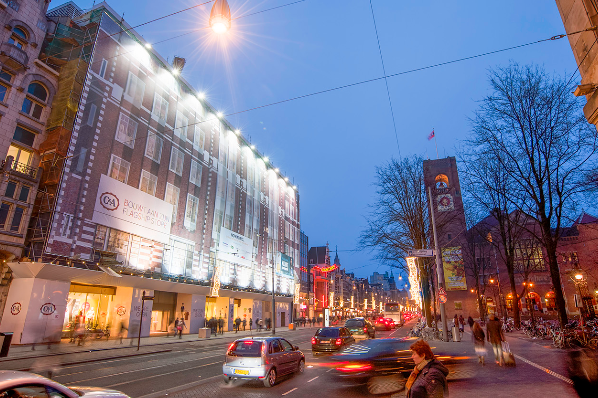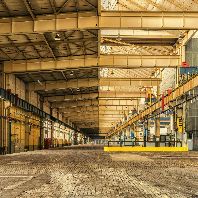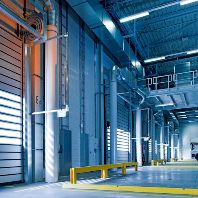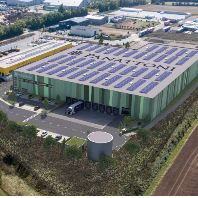Rules and regulations differ between cities, regions and countries across Europe, but during construction or renovation phase, building wraps are often becoming a mandatory inclusion. Therefore, it is essential to generate innovative ways of keeping costs down while maintaining the safety integrity of the site itself. A win-win prospect to help generate revenue or cover costs during a construction project is for property managers to lease their building facades to advertisers, much like outdoor billboard advertisements. The main difference is that the billboard is only available for the duration of construction. It is essential that the location is visible to the right target audience to make it viable to the advertiser. Another proactive method is to market own projects by mentioning an anchor tenant or showcasing what the building will become once renovation is completed.
Outdoor advertising using building wraps
Advertising wraps have been gracing city landscapes on existing buildings for decades, utilizing prominent locations for giant advertising; but building wraps differ-their first function is to hide construction exteriors. Only recently has their vast potential been recognized for advertising and marketing purposes. When strategically located in prominent areas, on high profile external facades, building wraps are an excellent way of achieving huge exposure and offer a limitless way of achieving distinctive brand presence.
A noteworthy example of effective self-promotion and marketing is the Primark flagship store leased by Bouwinvest, opening this year in a prime location in the center of Amsterdam. During the drastic remodeling of the building, a building wrap on the frontage was utilized to display an imitation of the new building once construction was completed. Maintaining and showcasing the look and feel of a building, while providing graphical representation to the general public that a retail favorite is about to setup shop there, is a very effective strategy.
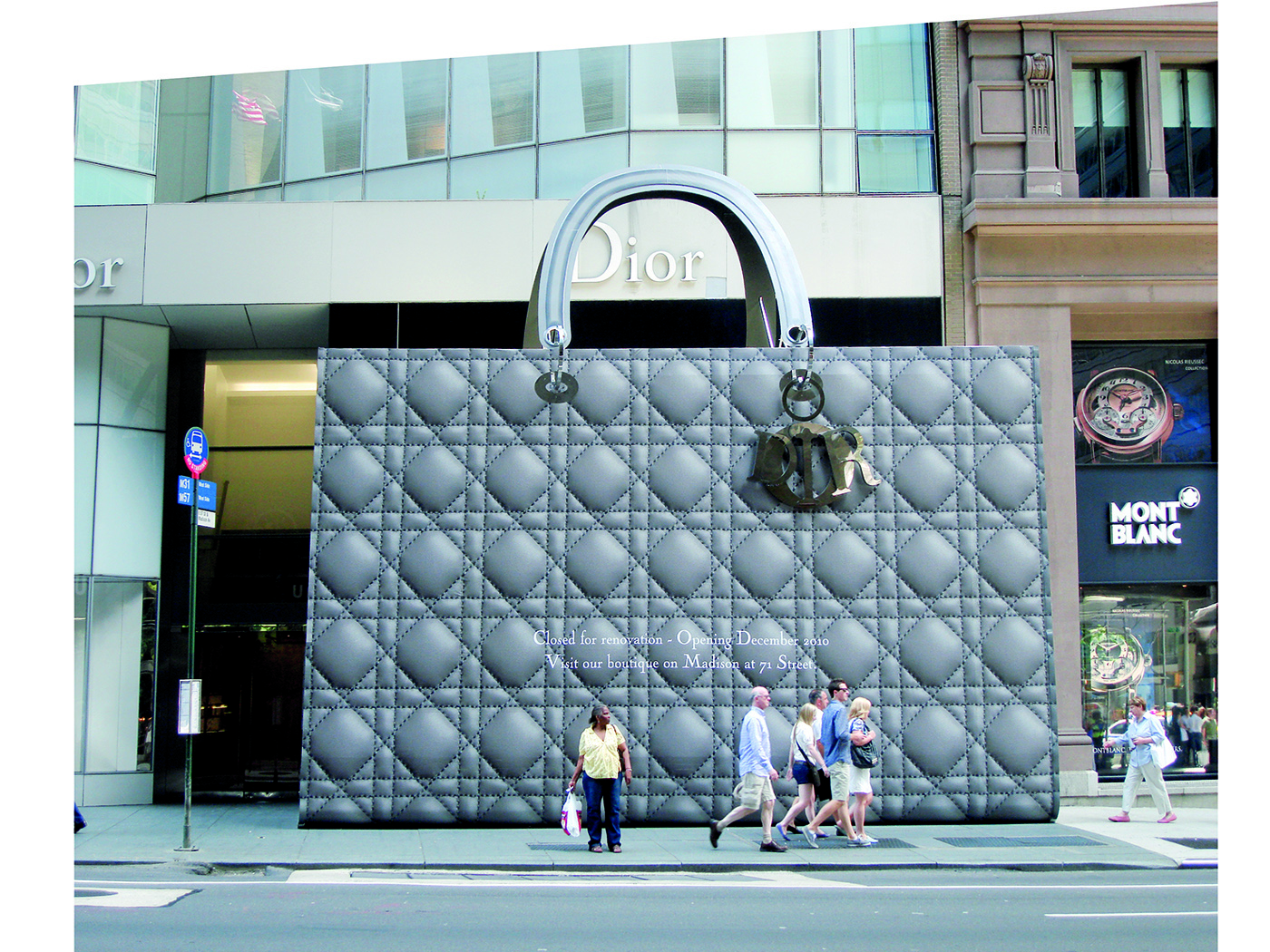
Traditional building wraps
Aéroports de Paris decorated the exterior of Orly Airport’s South Terminal building with a gigantic mosaic look-alike wrap. The one of a kind welcome sign covered over 3,200 m² of surface with over 7,000 portraits of some of the airport’s passengers, employees, partners and local residents. By integrating the selfies trend sweeping social media, Aéroports de Paris successfully created a current, interactive project which is aesthetically interesting for its visitors and created a buzz in social media groups.
Maintaining building potential
Construction sites in Europe have a long way to go in creating a positive image to local communities and would benefit in examining methods to receive good public relations. As a result, companies’ ability to manage the project, effectiveness, awareness of environmental issues and its high regard for local inhabitants would become a positive marketing tool for itself and the industry as a whole. A scheme like the Considerate Constructors Scheme (CCS) set up in the UK by the construction industry, is an independent organization encouraging the image improvement of buildings under construction. Members of the public and local communities are encouraged to ask questions about construction works and the changes they will bring to the environment.
The Scheme is nationally recognized and endorsed by local authorities, the government, main contractors and major industry clients. It can add substantial value to a property by granting it a competitive edge with prospective clients by a commitment to maintaining and adhering to high standards. The sites can achieve the CCS industry recognition and the opportunity to win national awards, while at the same time act as a benchmark for future development and improvement. This scheme would be effective for Europe as it would bring standardization to under construction property.
Occasionally, infamous and historic buildings in touristic cities need renovation, hugely disrupting tourism in some cases. Tourists come from all over the world to visit London, one particular building of huge interest, internally and externally, is Harrods. Recently, during renovation, Harrods invested in a giant building wrap and hoarding which replicated the exterior of the building; although not as remarkable as the actual building, they successfully managed to offer an imitation alternative for its visitors, without displaying the unpleasant and visual pollutant of a construction zone.
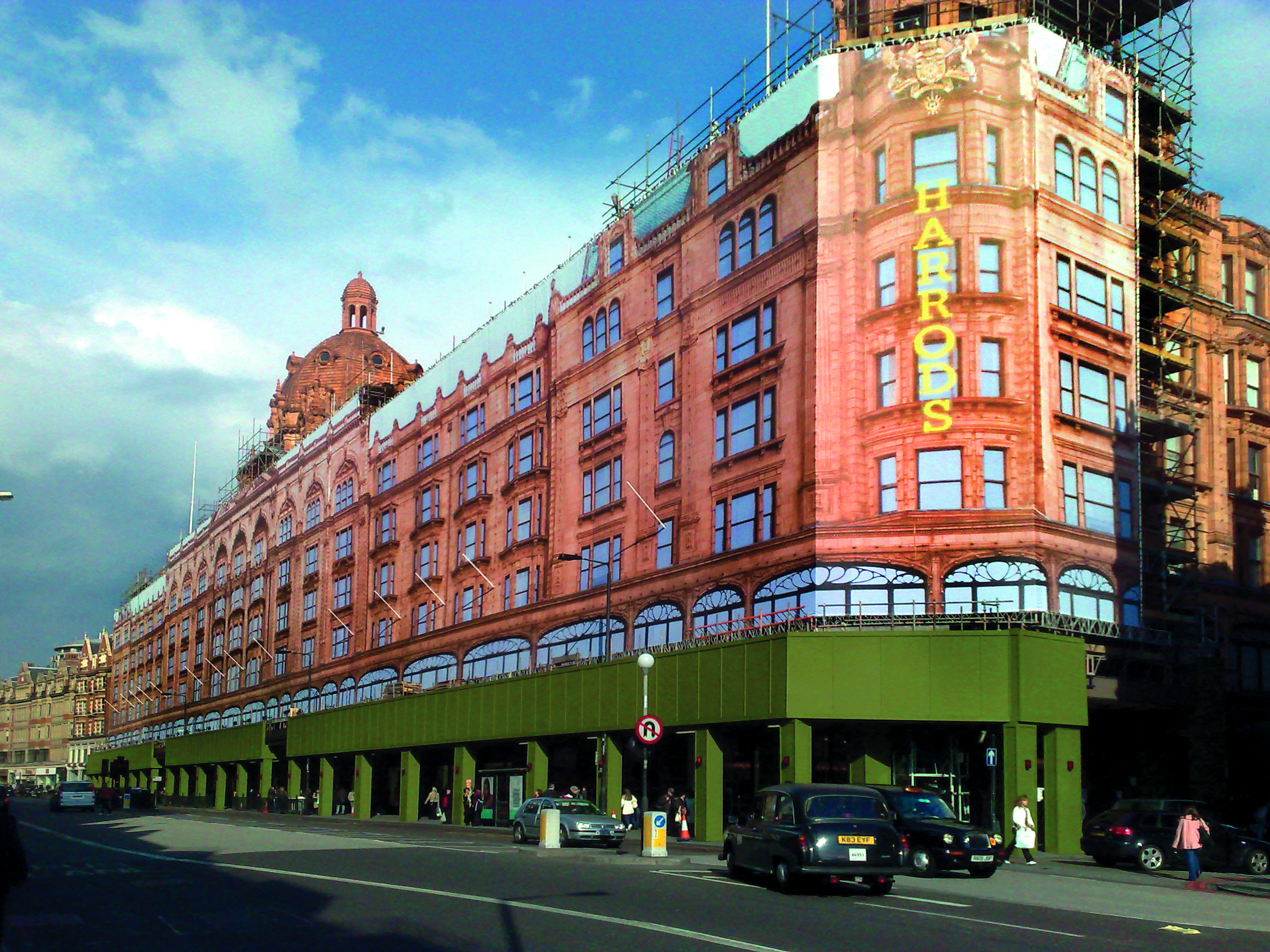
Bringing a GiantSpot to life
Building wraps not only cover the building, act as a barrier or a billboard for big advertisements, but can highlight potential and value of space, coupled with its specific location. GiantSpots, or building wraps, are means of an alternative in outdoor advertising, awareness and marketing.
By using different innovations, delivering high quality and eye-catching promotions, a company such as BrandSpots can provide and manage your GiantSpot requirements throughout Europe; offering the opportunity for the developer, property manager or owner to cover the cost of the wrap, while providing a communal benefit. The large-format advertising spaces can reach target groups with impressive, attention-grabbing images that can be vital to: inform the public of the intentions for the building and offer a brand or city marketing project promotion, in order to generate positive public relations and drive marketing interest for the location, building and the environment itself.
The wrap promotes: safeguarding, keeping local communities informed about the building’s development and helps innovate the ‘space’. Not only does the building adhere to construction regulations it also promotes a more pleasing aesthetic environment.
The full article is in the Europe Real Estate 2015 reference book. Purchase the book in the webshop.
